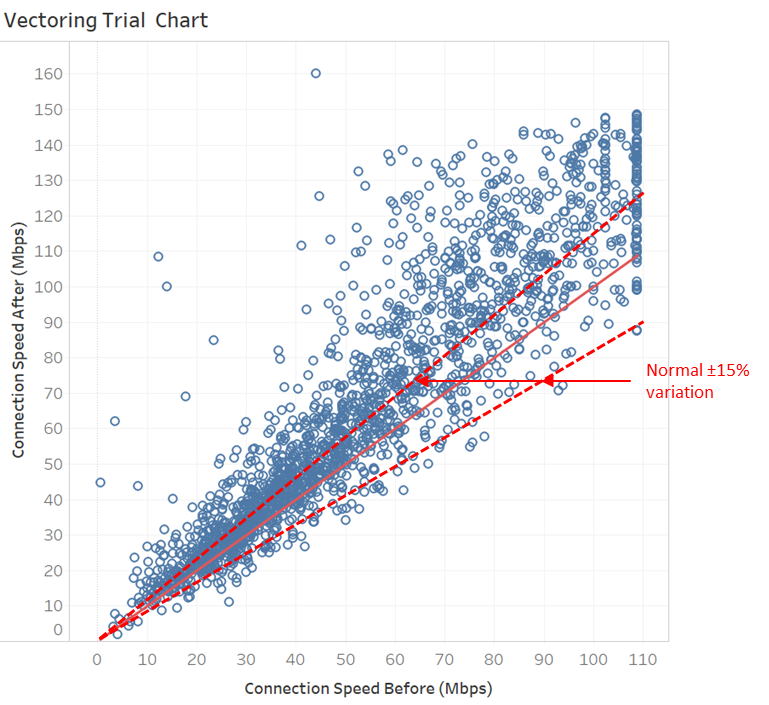VDSL Vectoring Trial Results
Vectoring is a VDSL enhancement that increases the speed and stability of a connection. We’re proposing to install it in areas where fibre isn’t planned as part of our copper network’s lifecycle management. A trial was undertaken on 7,448 lines in Beckenham, Christchurch, to confirm expected speed and stability gains while minimising end user impact.
What’s changing
Vectoring will be applied to every VDSL-enabled port in a cabinet area once roll out proceeds. If your customers have a compatible modem they’ll receive a much greater synch rate. The new cards will also improve noise performance.
Our trial activated VDSL Vectoring on all the 3,546 VDSL lines of the total number of 7,448 lines in 33 cabinets in 4 phases and monitored impact. This change and trial are being discussed at a Telecommunications Forum (TCF) working group.
What's the detail?
Vectoring reduces the impact of cross talk and interference, inherent to copper cables. It enables better performance from a VDSL line typically through higher downstream line speeds and greater stability. The trial results in the chart below showed increased stability and an increased average downstream speed of 12Mbps. Lines on the maximum speed increased from 108Mbps to a range of 100 to 150Mbps.

The line speed is not fixed over time and there is always some variation between any two snap shots due to environmental changes like cable condition, electrical noise, modem start up and shut down.
We’ve also introduced G.INP to VDSL lines to improve electrical noise performance. This reduces the impact of impulse noise like switching transients and electric fences.
Vectoring and G.INP only deliver improvements for customers with compatible modems. A fully compatible modem sees improvements in both directions. An incompatible modem will see no change. We believe the majority of modems are compatible based on our lab testing.
The trial found a higher than expected level of incompatible modems at 1 ~ 3 % (first phases were 3% but improvements to activation process reduced that to 1%). We have identified two modems that require software updates and our SDMs are working with associated RSPs to make that change before a wider rollout. For more information on VDSL vectoring check out this white paper and these FAQs.
Next Steps
We’re consulting with the industry, via the TCF, on the implementation of VDSL vectoring and G.INP. We’ve shared the results of the pilot on active VDSL lines in Ethernet DSLAMs, within a Christchurch non-fibre area.
While the pilot tests confirmed our expected improvements, we need to address the higher than expected number of incompatible modems before we roll out VDSL vectoring to all Ethernet DSLAMs in areas without our fibre. This number may simply be the percentage of older or non-standard modems in network, but we need to determine better methods of minimising end user impact. We are working with affected RSPs individually and at TCF on identifying in compatible modems before seeking approval to proceed with roll out. This should be done early next year.
Your service delivery manager will update you with test timings once confirmed. Contact them (or your TCF representative) for any further queries.
